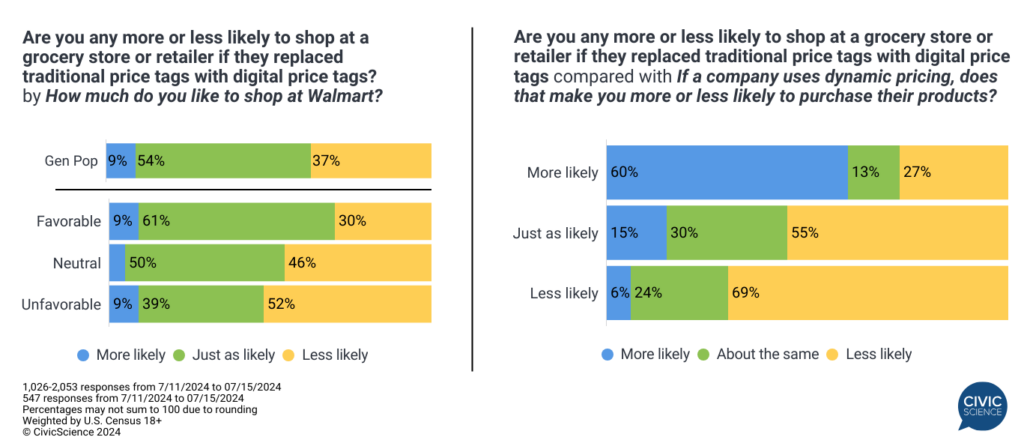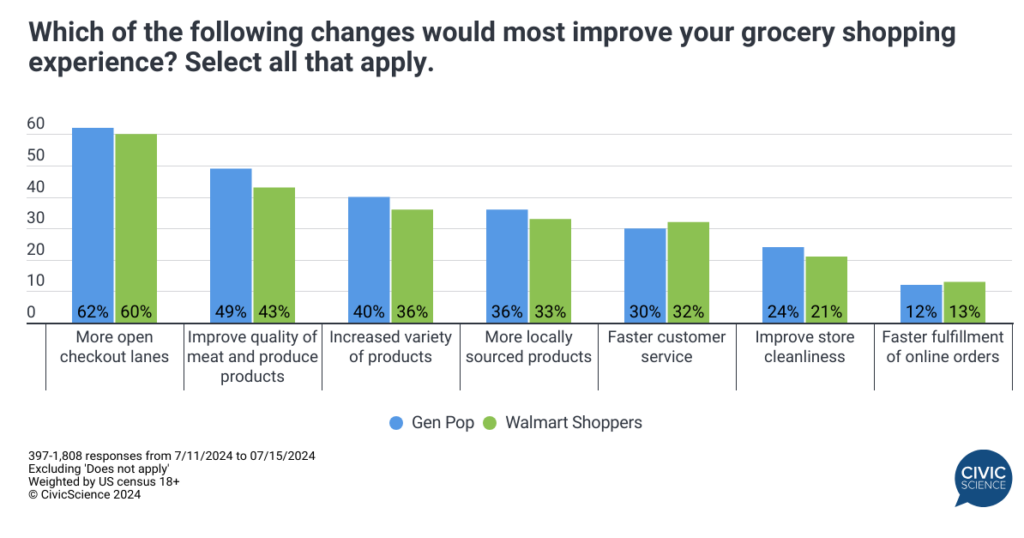This is just a sneak peek at the thousands of consumer insights available to CivicScience clients. Discover more data.
If you shop at Walmart, you’ll eventually begin to see price stickers on the shelves become digital. That’s because Walmart announced that it would be replacing its traditional shelf price tags with “digital shelf labels” at all of its store locations by 2026, saving employees time from having to change paper price tags physically throughout the store.
CivicScience data show, however, that consumers are skeptical about implementing digital shelf labels – just 14% of U.S. adults believe replacing traditional price tags with digital ones would positively impact their shopping experience at grocery or retail stores, compared to 40% who think it would have a negative impact. Gen Z adults and Millennials are more optimistic about digital shelf labels, while a majority of Americans 55+ lean negative.

Lets Us Know: Do you support or oppose Walmart’s impending use of digital shelf labels?
Switching to digital price tags has some consumers leery – is the prospect of dynamic pricing to blame?
Change can be hard to embrace. Additional data show the idea of transitioning from traditional price tags to digital shelf labels would make 37% of U.S. adults ‘less’ likely to shop at a retailer, compared to 9% who would be ‘more’ likely to shop following the change. A similar percentage of Walmart shoppers would be more likely to shop after the transition, while 3-in-10 report they’d be less likely. The majority, however, are neutral.
Could some of that reluctance be related to concern that digital price tags may lead to the use of dynamic pricing with prices changing based on fluctuations due to demand? Walmart is very clear that it will not be using the new signage for that purpose. Consumer perceptions, however, are less clear. Data show there is a strong correlation between consumers who are less likely to shop at retailers who’ve switched to digital price tags and those who are less likely to buy from brands that use dynamic pricing.

The time-saving benefits present Walmart the opportunity to address other store areas.
Walmart notes that the shift to digital labels will give employees more time to serve customers and boost speed and efficiency. What do consumers say would most improve their shopping experience?
CivicScience data found that both U.S. adults and Walmart shoppers consider opening more checkout lanes the primary improvement that would enhance their shopping experience. Less than 15% cite faster fulfillment of online orders.
Other leading factors go beyond improving efficiency. For instance, shoppers emphasize the products themselves, whether the quality of meat and produce, or a desire to see more variety or more locally-sourced products.

Join the Conversation: How do you feel about grocery shopping?
For many Walmart customers, Walmart’s transition to digital shelf labels isn’t something they believe will have an impact on their shopping experience, although Americans in general are less positive about digital labels in grocery and retail. Allocating employee time to address customer concerns, such as more checkout lanes and faster customer service, may serve Walmart well in the long run to keep shoppers happy and coming back.








